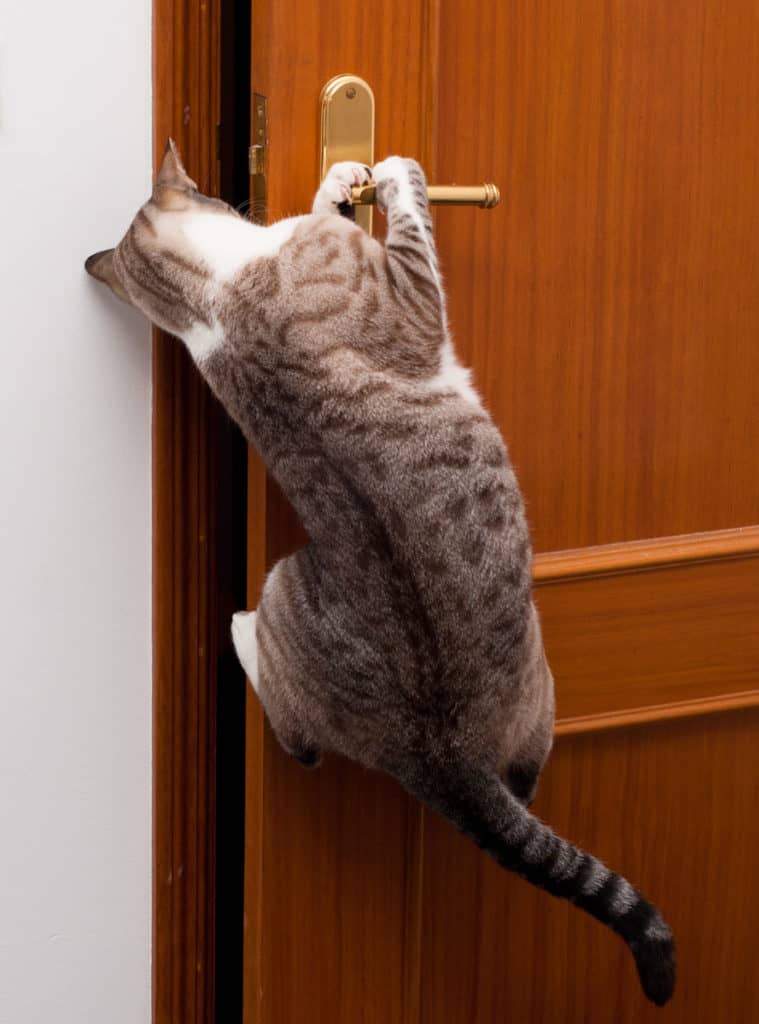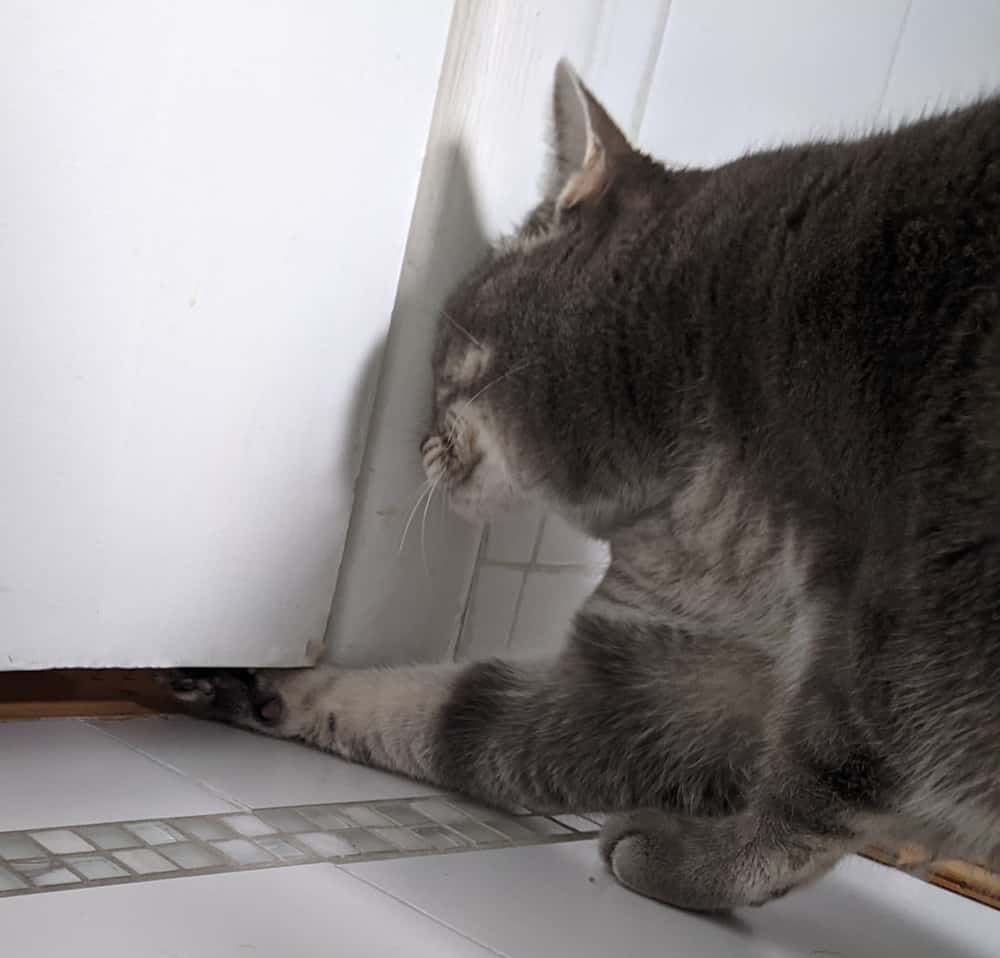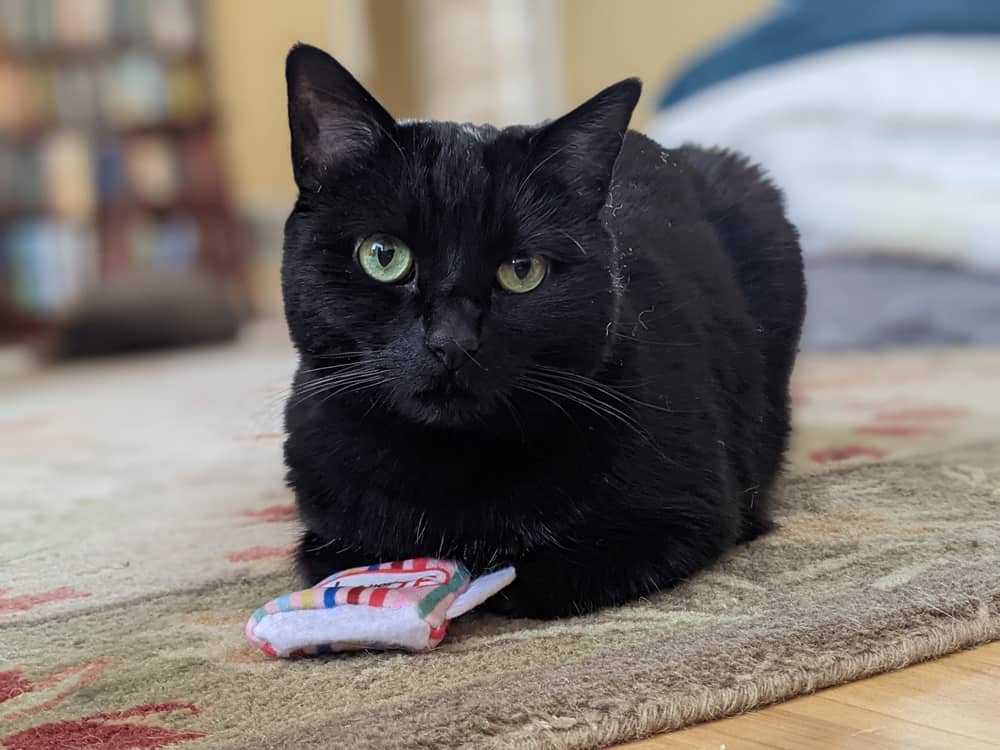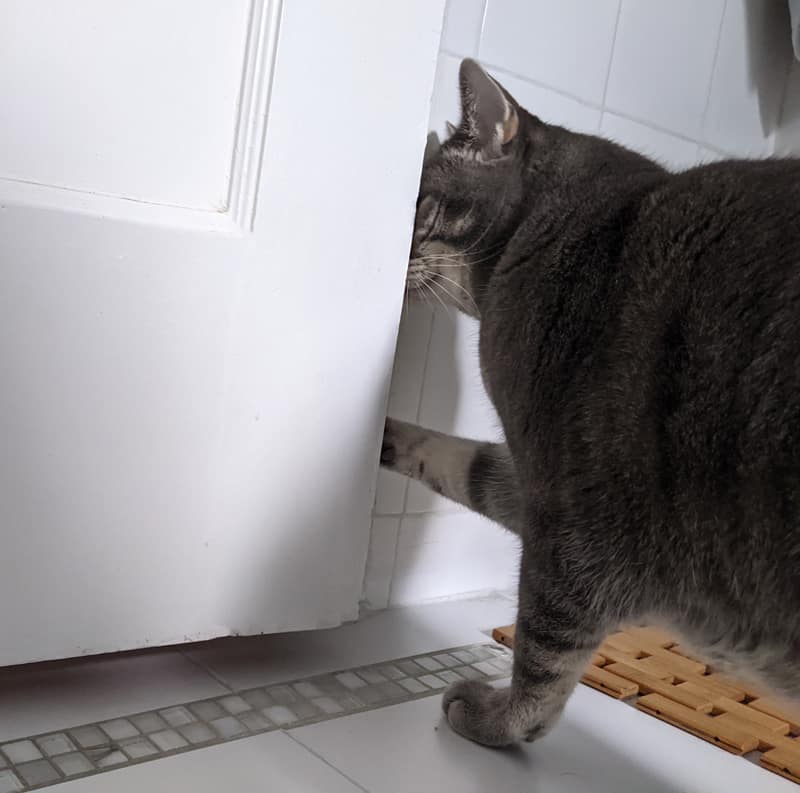Have you ever been sure you closed your bedroom door, only to discover that your cat somehow made it into your room anyway? Cats may not have opposable thumbs, but with enough patience and practice, the most persistent of cats can learn to open some types of doors.
Cats are highly intelligent, and the most observant cats can learn how to open doors just by watching their owners. Door knobs are typically trickier for cats, but many cats find it simple to open door handles. Most cats like to have access to every part of the house, and they can teach themselves to open doors so they can go wherever they please!
As adorable as it may be to find out that your clever little cat learned how to open doors, it can end up being a huge inconvenience at times. Your cat may learn how to open cupboards and mess with your pantry, or it could even use its newfound knowledge to get into dangerous places.
If you’re afraid of your cat getting into things they shouldn’t be, read on to find out how you can stop your cat from opening doors.
How do cats learn to open doors?
Cats are keen observers and can learn by watching humans or other animals. If they see someone opening a door, they might attempt to imitate the action. Often, a cat’s motivation to open a door is driven by curiosity, desire to explore, or the need to be in the same space as their human companions.
Once a cat has an idea of what to do, they will likely experiment with different techniques to open the door. Cats are natural problem solvers. When faced with a closed door, they will often explore different methods to get it open. This can include reaching under the door, jumping to reach the handle, or even standing on hind legs to get a better grip. Over time, through repeated attempts, the cat begins to understand what works and what doesn’t.
How do cats open doors?
Cats, of course, don’t have hands like we humans do, so how is it that they’re able to open doors in the first place? YouTube is full of videos showing cats being clever and opening doors.
Cats will use their body weight to push open doors
The easiest way that cats can open doors is by using their body weight to pull or push open a door that wasn’t closed all the way. This is a simple solution that most cats figure out at some point in their lives, and this problem can easily be solved by making sure to close your doors all the way.
Some cats learn to use their paws to turn the knobs on doors to open them
The cleverest of cats can still figure out how to open doors that have been firmly closed. Cats have highly flexible and dexterous paws. Unlike most animals, they can manipulate objects with a level of precision akin to a human using their hands. This dexterity allows them to grip doorknobs or handles and apply the necessary movements to open doors.
Certain breeds, like the snowshoe cat, are known for being able to learn how to open doors. Lever door handles are the easiest kind of handles for cats to open. Cats have a difficult time gripping door knobs, but they can hook their paws beneath lever door handles and pull them down, effectively opening the door.

It is possible for cats to open these kinds of doors by jumping and pulling down on lever handles.
It’s incredibly rare to see a cat who knows how to open a door knob. If there is a higher surface next to the door, like a shelf, your cat might have an easier time learning how to twist its paws to open the door knob, but this usually only happens with the smartest and most determined of cats.
Why don’t cats like closed doors?
There are a number of reasons why cats don’t like closed doors in their homes
Cats are territorial
Cats are territorial animals, and a closed door can be perceived as a barrier to their ability to fully access and control their territory. They may feel uneasy or stressed if they believe part of their territory is inaccessible or if they can’t monitor it effectively.

Cats like to explore
Cats don’t like closed doors because they restrict their access to parts of the house, and make it difficult to explore. This is especially true for cats that don’t receive much enrichment. If you don’t have a cat tree, lots of interesting toys, or give your cat much playtime, then your cat might try to get more stimulation by exploring other rooms.
If a cat is used to having access to all areas of a home, a suddenly closed door can disrupt its routine and habits. Cats are creatures of habit and can become unsettled when their regular patterns are altered.

Your cat wants to be near you
Some cats don’t like closed doors because they miss their owners. A lot of people assume that cats are aloof and independent, but there are plenty of cats out there who love their owners, and who enjoy lots of attention.
Cats can be quite inquisitive about activities happening around them. A closed door might mean they are missing out on something interesting or important in another part of the house, which can trigger their curiosity and desire to be included. If your cat is feeling lonely because you’re hanging out in a different room, it might try to open the door to spend more time with you.
Do cats have object permanence?
Object permanence is when a living being is able to understand that something exists, even when they can’t see it. Humans don’t develop object permanence until they’re around eight months old, which is why the game of Peek-A-Boo is so exciting for young babies! Object permanence is also used as a measure of intelligence in different animal species.
Not all animals have object permanence, but cats certainly do! If you were to throw a blanket over your cat’s favorite treats, it would still know that the treats were there, and not just because it would be able to smell them! But what does this have to do with cats opening doors?
If your cat has a certain toy or sleeping spot in one room, and you close the door, your cat won’t simply forget that those things exist. Instead, your cat might become frustrated that it can’t reach the objects it wants to, leading it to learn how to open the door.
How to stop your cat from opening doors
It might be cute at first to watch your cat open a door, but that can quickly turn into annoyance or even fear. After all, some doors are best kept closed for our cat’s safety! If your cat learns how to open doors, it might also learn how to open cupboards containing food or even dangerous cleaning chemicals.
If you’re trying to keep your cat out of a room so you can study, or to protect your feline from something dangerous, then your cat’s ability to open doors can suddenly become a huge problem. But what can you do to stop your cat from opening doors?
For every method of training, you’ll need to be firm and consistent. Keep a close eye on your cat and make sure to react the same way every time your cat opens the door, or even tries to open the door.
One possible way to stop your cat from opening doors is to use something loud, like a can filled with pennies, or even your own voice. Once your cat tries to open a door, shout or rattle the can to startle your cat. Your cat should eventually build a negative association with trying to open the door, and will eventually stop.
You can also place environmental deterrents to make opening doors unpleasant for your cat. Double-sided tape, aluminum foil, and other materials can be unpleasant or even scary for your cat to touch! Putting these materials in front of the door, as well as near the door handle, should train your cat to stop.
Another method is to spray cat-safe citrus scents around the door. Cats have very sensitive noses, and citrus is so strong for cats that it usually makes a good repellant.
Environmental factors like aluminum foil, tape, or citrus scents should be reapplied consistently until your cat stops opening doors altogether. Then, you should be able to remove these items.
Finally, one way you can encourage your cat to stop opening doors is to provide enrichment and attention. If your cat is opening doors because it needs more stimulation, or because it misses you, then the best way to solve the problem is to start at its root cause.

Consider getting a cat tree, or even some wall-mounted shelves for your cat to climb on. Instead of keeping every cat toy out and in reach of your cat at all times, divide your cat’s toys in half and cycle them out every few weeks. This will keep things exciting for your cat, and prevent it from becoming bored with its toys.
You should also make sure to provide your cat with attention and playtime for at least thirty minutes every day. Overall, this can help your cat feel more satisfied with its life, and it will be less likely to open doors.
Can you train your cat to open doors?
Most people find it annoying when their cat learns to open doors, but for some owners, this skill might actually be convenient. This can increase your cat’s independence and can make for some pretty cute videos. While it’s not possible to train every cat how to open doors, it’s always worth a shot!

Positive reinforcement is essential when it comes to training cats. Whenever your cat does something good, like touch the doorknob, make sure to give it a few treats and some pets. However, keep in mind that the following training method only works for doors with lever handles, as it’s not really possible to teach a cat how to open round door knobs.
Place a treat or two on top of the door handle. Your cat should paw at it, which will open the door. Do this several times, then switch to standing behind the closed door while rattling food or your cat’s favorite toy. It should figure out how to open the door so it can get to its treat!
Final thoughts
Cats are super intelligent, and the smartest of felines can even use their wits to open doors! While this may seem cute at first, however, it can actually be a huge inconvenience, or even a danger to your cat. By providing negative reinforcement, like making loud noises or putting repellants near door handles, you should be able to train your cat to stop opening doors.
References
Bradshaw, J. W. (2012). The behaviour of the domestic cat. Cabi.
Goulet, S., Doré, F. Y., & Rousseau, R. (1994). Object permanence and working memory in cats (Felis catus). Journal of Experimental Psychology: Animal Behavior Processes, 20(4), 347. https://doi.org/10.1037/0097-7403.20.4.347
Thorndike, E. L. (1898). Animal intelligence: An experimental study of the associative processes in animals. The Psychological Review: Monograph Supplements, 2(4), i. https://doi.org/10.1037/h0092987
This article was originally written on October 13, 2021 and has since been updated.






